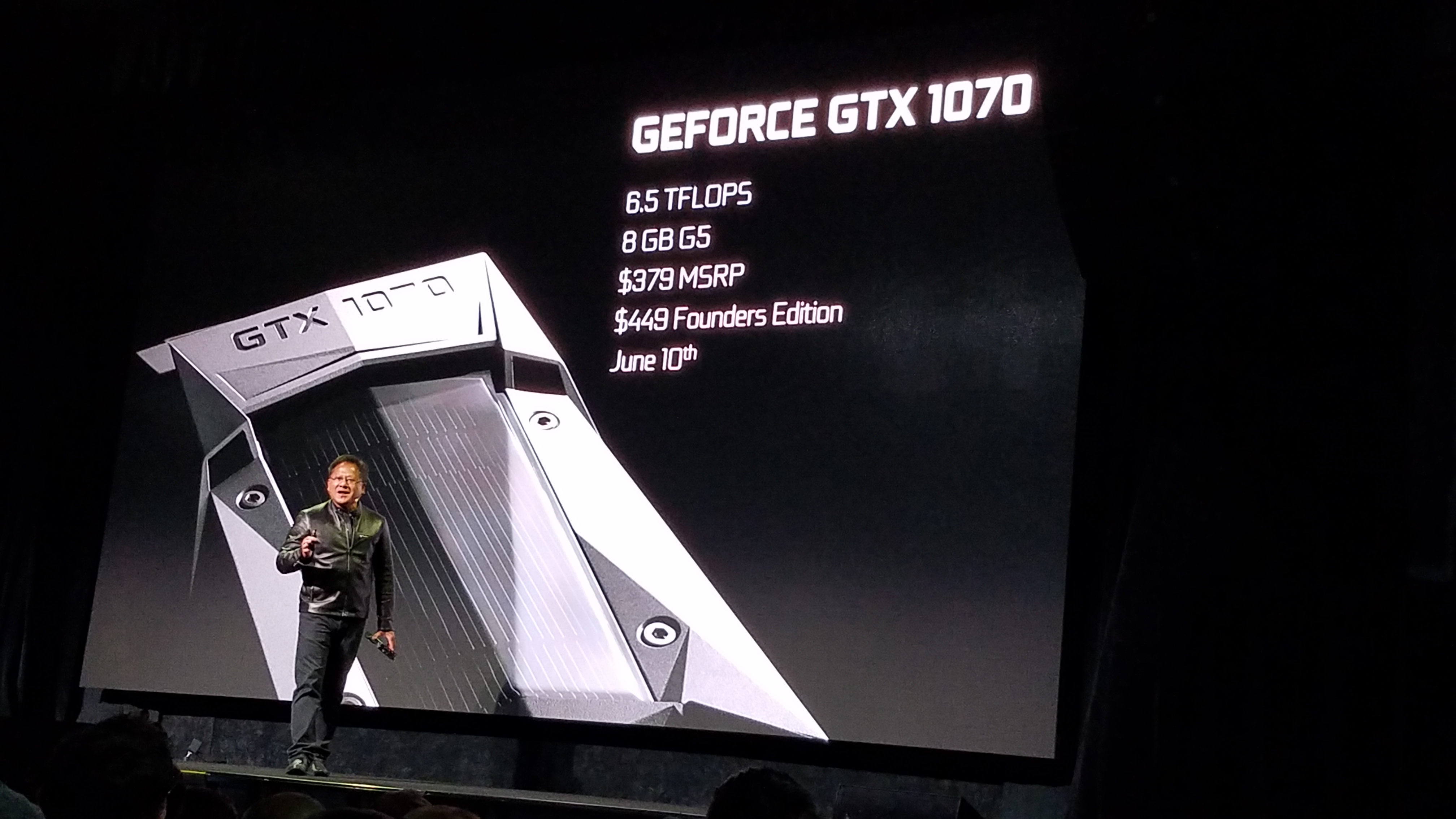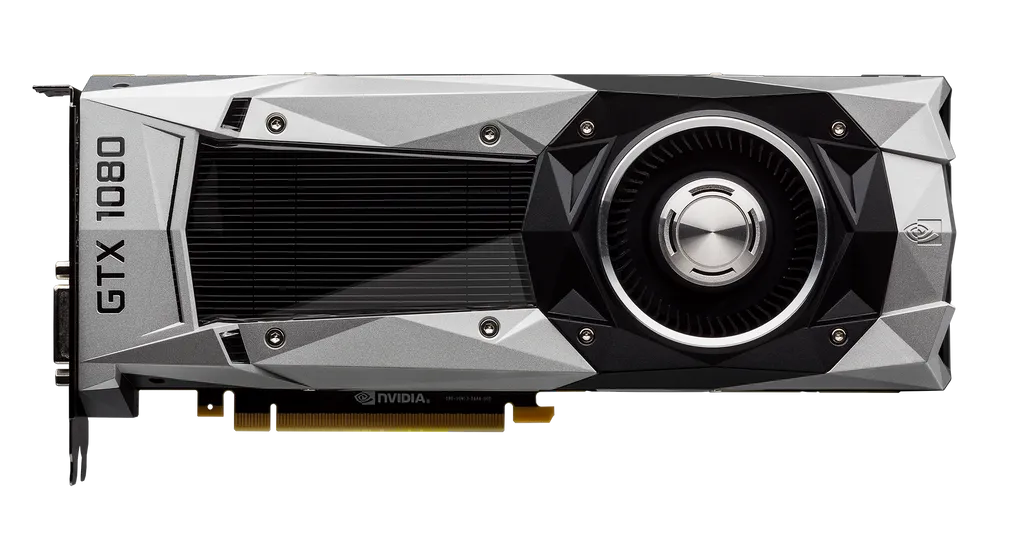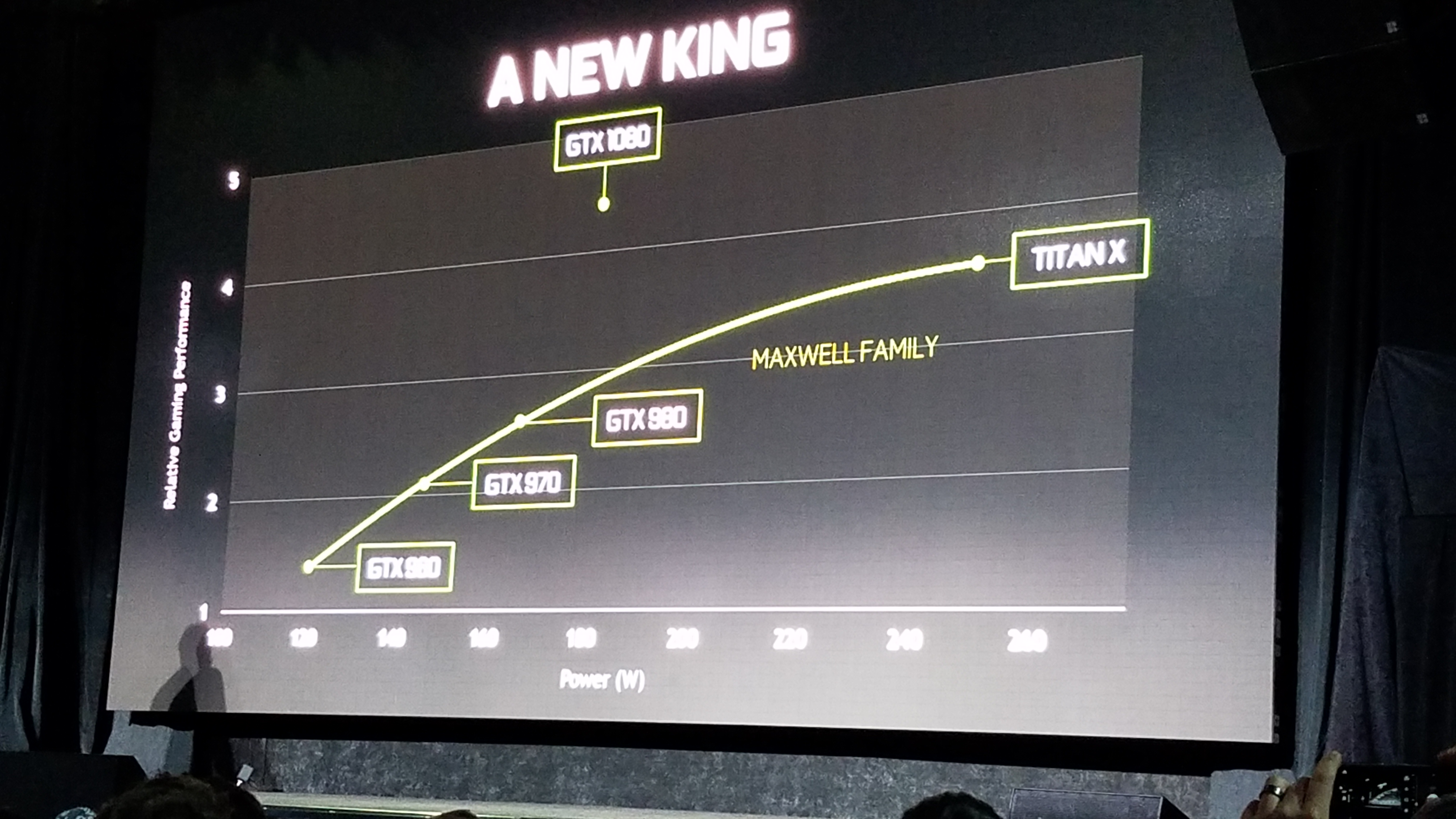When Nvidia launched their GTX Titan X just over a year ago, it was the most powerful graphics card in the world. That performance crown came with a premium price: $999. A few months later Nvidia released the GTX 980Ti, which almost toppled the Titan X for $649. Today Nvidia announced what we all expected: The GTX 1080, based on their new Pascal GPU architecture. What we weren’t expecting is everything that came next. According to Nvidia, the GTX 1080 not only outperforms the Titan X, but it blows away a pair of GTX 980 cards in SLI while staying cooler and using significantly less power. Why is that so special? The GTX 1080 is launching later this month for $599.
“Moore’s Law is running out of steam”
The tried and true formula for generational leaps in graphics card technology is typically less of a leap and more of a confident step. We normally see roughly the same price structure, a bump of 20% to 30% in performance, and slightly better power efficiency. What I don’t think we’ve ever seen is a card that obliterates a company’s most premium offering at nearly half the price, and only a year later.
“Moore’s Law is running out of steam,” Huang said during the presentation. “We have to do this now through an enormous amount of dedication. Thousands of little ideas, hundreds of big ideas, and a few groundbreaking ones. This is the largest GPU endeavor in the history of humanity. The R&D budget was several billion dollars.”
Yes, he said billions.
Making this performance leap possible is Pascal, the codename for the architecture at the heart of Nvidia’s new graphics cards. Thousands of engineers spent two years working on it, with the intention of dramatically increasing performance, memory bandwidth, and power efficiency. In simpler terms: a lot more performance allows you to crank up the visual fidelity of your favorite games, while using less power from your wall. Less power means less heat, and with less heat comes less noise from the cooling solutions. All around, it’s a pretty winning scenario for PC gamers. But what about those of us living in VR?
“Irresponsible amounts of performance”
“The 1080 is insane,” Huang told t he international audience during the event. “It’s almost irresponsible amounts of performance.” When Huang uttered those words, I’m sure he knew he’d be quoted up and down. I’m happy to prove him right.
Nvidia says that with virtual reality titles, the performance of the $599 GTX 1080 is twice that of the $999 Titan X. And power efficiency? 3x better than their last generation of cards. Even if they’re slightly exaggerating, that’s still beyond impressive. I’ll have extensive hands-on time with the card in the near future and will happily put it through the paces.
So the GTX 1080 — at least on paper until we’re able to benchmark it at Upload HQ — sounds incredible. But the fact remains that $599 is still $599. For power users and PC gaming enthusiasts, it’s still one hell of a bargain by comparison. But in order to see VR proliferate to the masses, we need to see VR-ready GPUs with much more affordable price tags.
The GTX 1070 And The Cusp Of Affordable VR

Meet the GTX 1070, which represented Nvidia’s last-minute “one more thing” mic-drop finale. It also outperforms the Titan X, and it will retail for $379. As someone who’s been covering the graphics card industry for the past 5 years, believe me when I say this is a remarkable price for that kind of performance.
The current minimum recommended GPU for Oculus Rift or HTC Vive gaming is Nvidia’s GTX 970, which costs about $309. Based on my testing, the Titan X is 50% faster than the GTX 970. That means at the bare minimum, the GTX 1070 is coming in with a 50% (likely much higher) performance boost over the GTX 970, for only 22% higher cost.
I know that’s a lot of numbers and parts but stick with me. As they have in the past, Nvidia will follow up these cards with their more mainstream (read: affordable) offerings later in the year. That will be the GTX 1060, which should easily outperform the GTX 970 at what I predict will be a card that hits retail for about $249. That means the entry-level cost of a VR computer goes from $1000 to about $850 in the span of one year, and gives you more performance for your money. That excites me, because we’re seeing the cost-of-entry to high-end virtual reality experiences plummet much faster than I expected it would.
There’s a lot more to unpack from this weekend’s Nvidia event besides hardware, so stick around!



























